There’s a common misconception that you can’t use exterior paint indoors – but this isn’t actually the case! In fact, many homeowners choose to do just that in order to get the same level of protection and durability for their interior walls. However, there are some important things to keep in mind when using exterior paint indoors – which is what we’ll be discussing in this article. So whether you’re looking to repaint your interior walls or are simply curious about the topic, read on for everything you need to know about painting with exterior paint inside!
What Is Exterior Paint?
Exterior paint is a type of paint that is specifically designed for use on the outside of a home. It is typically made from a thicker, more durable material than regular interior paint, and it usually has a higher level of protection against the elements. This makes it an ideal choice for painting areas like walls, trim, doors, and windows – which is why many homeowners choose to use it indoors as well!
One of the benefits of using exterior paint indoors is that it can help to protect your walls from damage. For example, if you live in an area with high humidity levels, using exterior paint on your interior walls can help to prevent them from warping or cracking over time. Additionally, exterior paint also does a great job of hiding imperfections and blemishes – so if you have any damage on your walls, it will be much less noticeable once you’ve painted over it.
Another advantage of using exterior paint indoors is that it is typically very easy to clean. This is because the thicker material helps to resist stains and dirt, making it much simpler to keep your walls looking neat and tidy. Simply wiping them down with a damp cloth will usually suffice – although you may need to use a stronger cleaner for tougher stains.[1]
Exterior Paint Formulations
The main difference between exterior and interior paint is the formulation. Exterior paint is formulated to resist mold, mildew, and UV damage from the sun. It’s also thicker than interior paint so it can better protect your home from weather damage.[3]
Interior Paint Chemistry
Interior paint is designed for use on surfaces that won’t be exposed to the elements. As such, it contains fewer volatile organic compounds (VOCs) than exterior paint.
So, if you’re considering using exterior paint indoors, make sure to choose a low-VOC variety. You can usually find these at your local home improvement store.[3]
Indoor Air Quality
Interior paint can contain VOCs (volatile organic compounds), which are released into the air as the paint dries. These VOCs can be harmful to your health, so it’s important to choose a low-VOC or no-VOC paint for indoor use.
If you’re considering using exterior paint indoors, make sure to read the label carefully. Some exterior paints may contain lead, which can be dangerous if inhaled.
In general, it’s best to err on the side of caution and use interior paint for indoor projects. But if you do decide to use exterior paint inside, take steps to ensure good ventilation and avoid contact with skin and eyes.
Can You Use Exterior Paint Inside?
You might be wondering whether you can use exterior paint indoors. The answer is maybe, but it really depends on the type of paint and the surface you’re painting. If you’re unsure, it’s always best to consult a professional painter or home improvement expert.
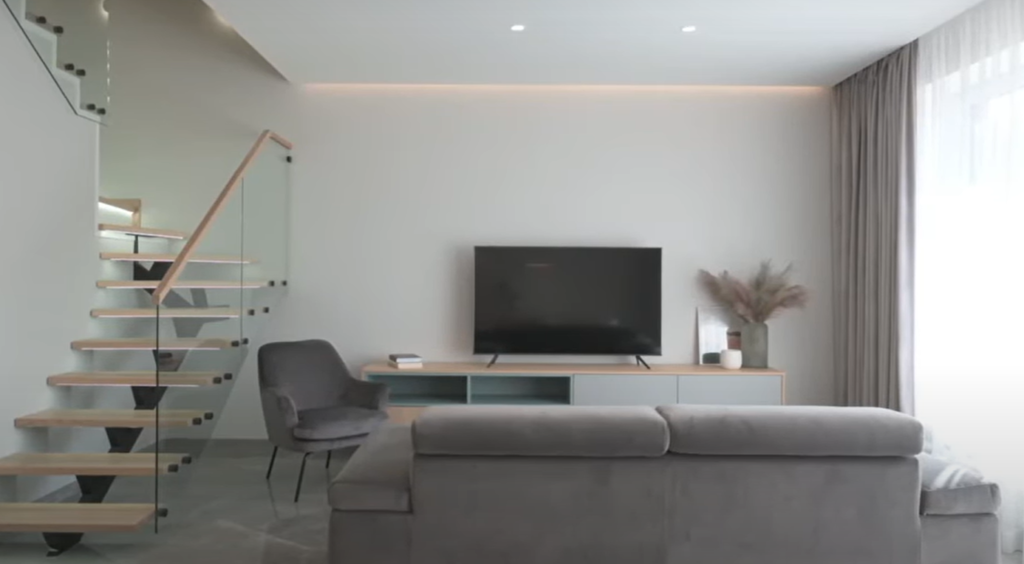
Here are some things to keep in mind when using exterior paint indoors:
- Exterior paint is made to withstand weather elements like sun, wind, and rain. It’s also designed to resist mold and mildew growth. That said, it may not be the best choice for indoor surfaces that don’t get much exposure to sunlight or moisture.
- Exterior paint usually has a higher VOC content than interior paint. VOCs (volatile organic compounds) are chemicals that can off-gas into the air and cause indoor air pollution. If you’re concerned about VOCs, look for low- or zero-VOC exterior paint.
- Exterior paint is usually more durable than interior paint, so it may last longer on surfaces that get a lot of wear and tear (like kitchen cabinets). However, it’s important to note that exterior paint isn’t necessarily scratch-resistant or stain-resistant.[1]
Reasons Why You Should Not Use Exterior Paint Indoors
Off-Gassing When Drying and Curing
Exterior paint often contains high levels of volatile organic compounds (VOCs). VOCs are chemicals that are released into the air as the paint dries and cures. These chemicals can be harmful to your health, causing headaches, nausea, and dizziness.
In addition to the health risks posed by VOCs, exterior paint also off-gases a strong smell that can be difficult to tolerate indoors. If you have asthma or other respiratory problems, the fumes from exterior paint can trigger an attack.[2]
Long-Term VOC Emissions
If you’re planning on using exterior paint indoors, it’s important to be aware of the long-term VOC emissions. These can be a serious health hazard, and they can also damage your indoor air quality.
It’s always best to consult with a professional before using any type of exterior paint indoors. They can help you determine if it’s safe for your particular situation.
In general, though, exterior paints should only be used outdoors. If you do use them indoors, make sure to ventilate the area well and stay away from any open flames or heat sources.[2]
Needs Sunlight to Cure Properly
One of the main reasons you shouldn’t use exterior paint indoors is because it needs sunlight to cure properly. If you use it in a room that doesn’t get much natural light, it will take longer to dry and may not cure evenly. This can lead to peeling and chipping paint down the road.
Otherwise, you’re better off sticking with interior paint. It will give you a better finished product in the end.Causing or Worsening Health Problems
If you are considering using exterior paint indoors, you should be aware of the potential health risks. VOCs can cause or worsen respiratory problems, including asthma and bronchitis. They have also been linked to cancer.
Paint fumes can also irritate your eyes, nose, and throat. If you experience any of these symptoms after painting, it is important to get fresh air immediately and see a doctor if the symptoms persist.
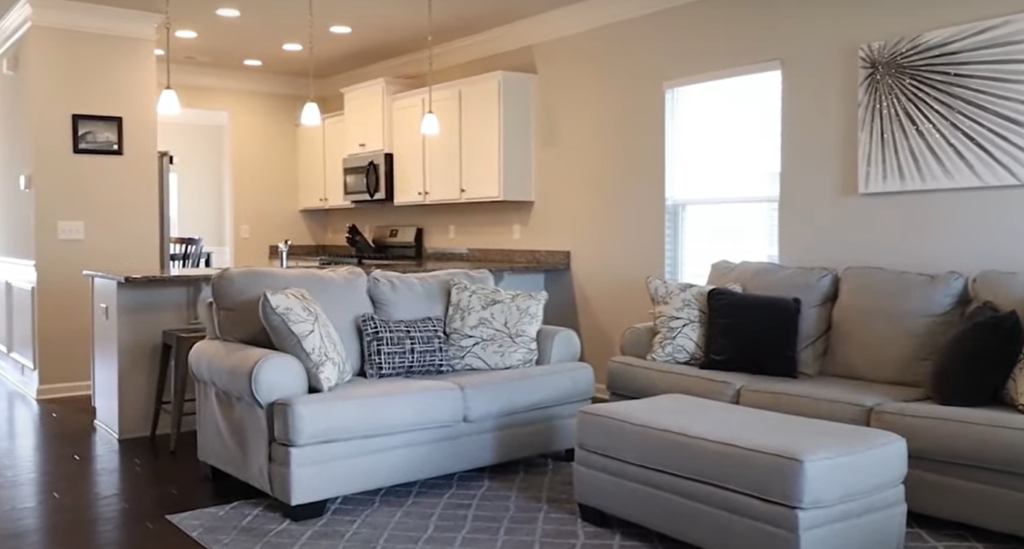
Exterior paint usually contains higher levels of VOCs than interior paint. Therefore, it is even more important to take precautions when using it indoors. Make sure to open windows and doors for ventilation and wear a mask to avoid inhaling fumes.[2]
Not Meant for Drywall
One type of surface you should avoid using exterior paint on is drywall. This is because the paint isn’t meant to adhere well to this kind of material, and will likely result in a poor finish.
Additionally, exterior paint typically doesn’t contain mildewcides or fungicides that can help protect against mold and mildew growth indoors. If you do use it on drywall surfaces inside your home, be sure to take extra precautions against these common household problems.
Different Texture and Finish
One big difference you’ll notice between exterior and interior paint is the texture and finish. Exterior paint is designed to withstand harsh weather conditions like wind, rain, and snow. It’s also made to resist mildew growth. As a result, exterior paint has a thicker consistency than interior paint. And it usually has a more matte finish.
Interior paint, on the other hand, doesn’t need to be as durable since it’s not exposed to the same elements as exterior paint. So it tends to have a thinner consistency and often has a glossy finish.
Prone to Scrapes and Scuffs
Interior walls don’t have to deal with the same wear and tear as exterior walls. They’re not as likely to be scraped by furniture or scuffed by shoes, so they don’t need paint that’s as tough.
Can You Paint Indoor Furniture With Exterior Paint?
The quick answer is maybe. If the furniture piece can withstand being outdoors, then painting it with exterior paint won’t cause any damage. In fact, using exterior paint on indoor furniture can actually prolong its life since the paint will provide an extra layer of protection against wear and tear.
However, there are a few things to keep in mind before you start painting your indoor furniture with exterior paint. First, make sure that the furniture is clean and free of any dirt or debris. Second, choose a paint color that compliments your home’s décor. And finally, apply several thin coats of paint rather than one thick coat to avoid drips and runs.
Can You Safely Store Exterior Paint Indoors?
The simple answer is yes, you can store exterior paint indoors. However, there are a few things to keep in mind if you plan on doing this. Here are a couple tips:
- Make sure the area is well-ventilated: Paint fumes can be harmful if inhaled, so it’s important to have good ventilation when using or storing any kind of paint.
- Keep the paint container sealed: Once you’ve opened a can of paint, make sure to seal it tightly when you’re not using it. This will help keep the fumes contained and prevent the paint from drying out.[2]
What To Do If You Accidentally Use Exterior Paint Inside
If you accidentally use exterior paint indoors, don’t panic! There are a few things you can do to fix the situation.
First, if the paint is still wet, try to remove it as quickly as possible. Use a damp cloth or sponge to wipe away as much of the paint as you can. Once the area is dry, you may need to repaint or touch up the area.

If the paint has already dried, you’ll need to sand down the area and then repaint. Be sure to use interior paint for any future painting projects inside your home.
Can You Mix Exterior Paint With Interior Paint?
The short answer is no, you should not mix exterior paint with interior paint. The long answer is a bit more complicated. Exterior paint is formulated to withstand the elements and therefore has different ingredients than interior paint.[1]
Interior vs. exterior paints: What’s the difference?
The main difference between interior and exterior paints is that exterior paints are designed to withstand the elements, while interior paints are not.
Interior paints, on the other hand, don’t need to be as tough since they’re not exposed to the same conditions as exterior paints. As a result, they don’t typically contain the same type or amount of additives that exterior paints do.[4]
Does homeowner’s insurance cover interior or exterior paint?
If you’re wondering whether your homeowner’s insurance policy will cover interior or exterior paint, the answer is maybe. It all depends on the cause of the damage. For example, if your house catches on fire and the paint is damaged as a result, your insurance policy will most likely cover it. But if you simply want to repaint your living room because you’re tired of the color, chances are your insurance won’t cover that.
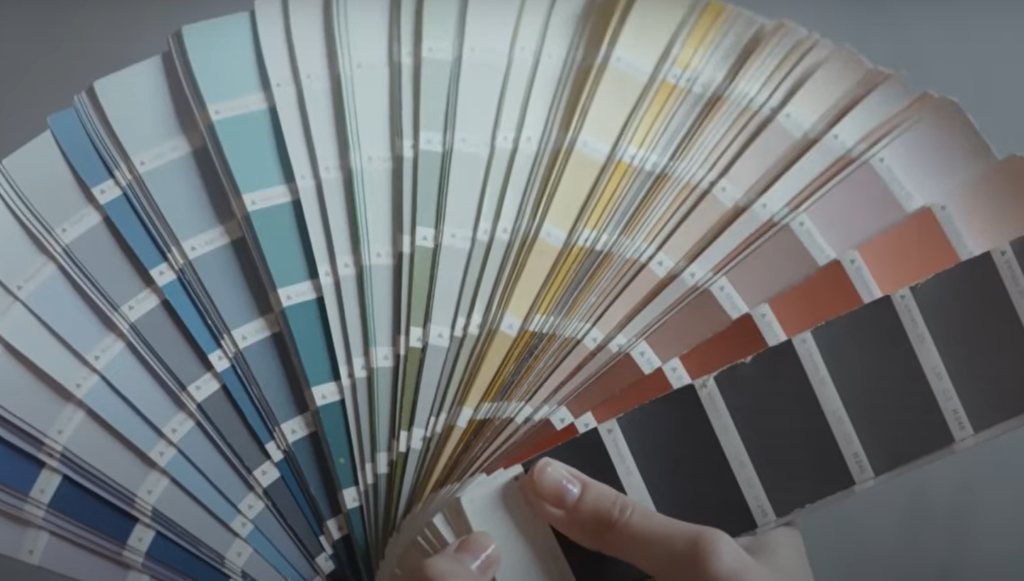
Some policies do have a rider that specifically covers painting, but it’s usually for an additional cost. So if you’re thinking about getting your home painted, be sure to check with your insurance agent first to see what coverage you have.[4]
FAQ
Can I use Behr exterior paint inside?
The short answer is yes, you can use Behr exterior paint inside your home. However, there are a few things to keep in mind before you start painting.
Is exterior paint better than interior paint?
This is a common question we get asked, and the answer really depends on what you need the paint for. If you’re painting a room that doesn’t get much sunlight or isn’t well-ventilated, then exterior paint might not be the best option because it can contain higher levels of VOCs (volatile organic compounds). These VOCs can cause respiratory problems and irritation to your eyes, nose, and throat.
Is exterior paint thicker than interior paint?
One common misconception is that exterior paint is thicker than interior paint. In reality, both types of paint have the same thickness. The only difference is that exterior paint has a higher level of pigment to protect against UV rays and weather damage.
Is interior paint cheaper than exterior?
The cost of paint is often determined by the quality of the product. However, when it comes to choosing between interior and exterior paint, there is no definitive answer. In general, exterior paint is more expensive than interior paint because it needs to be able to withstand harsher conditions.
If you’re trying to save money on your painting project, using interior paint for an exterior surface may not be the best idea. Additionally, if you’re looking for a specific color or finish that’s only available in exterior paint, you’ll need to use that type of product.
How much interior paint do I need for a 1500 square-foot house?
To determine how much interior paint you need for a 1500 square-foot house, you’ll need to figure out the total square footage of your walls. To do this, simply measure the length and width of each wall and multiply those numbers together. For example, if your living room is 20 feet wide and 30 feet long, its square footage would be 600. Do this for every room in your house (excluding the kitchen and bathrooms) to get an accurate estimate of how much interior paint you’ll need.
How much does it cost to paint a 12×12 room?
The cost of painting a 12×12 room will vary depending on the paint you choose, the number of coats you need, and any other special considerations (like high ceilings). To get a ballpark estimate, though, you can expect to spend anywhere from $100 to $300 for materials and labor. If you’re planning on doing the job yourself, be sure to factor in the cost of renting or buying painting supplies.
Useful Video: Difference between Interior Paint and Exterior Paint
Conclusion
So, can you use exterior paint inside? The answer is yes… but with a few caveats. If you’re planning on painting your entire house with exterior paint, we recommend talking to a professional first. Otherwise, be sure to keep an eye on the quality of your paint and how much you’ll need to get the job done right. Thanks for reading! We hope this article was helpful.
If you have any questions or comments, feel free to leave them below. We love hearing from our readers! And if there’s anything else you’d like to see us write about, just let us know. We’re always happy to take suggestions. Until next time!
References:
- https://painttopics.com/can-you-use-exterior-paint-inside/#
- https://homeinspectioninsider.com/exterior-paint-indoors/#
- https://www.hunker.com/13412978/can-exterior-paint-be-used-indoors
- https://getjerry.com/home-insurance/can-you-use-exterior-paint-inside



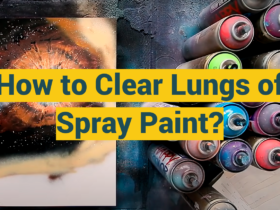

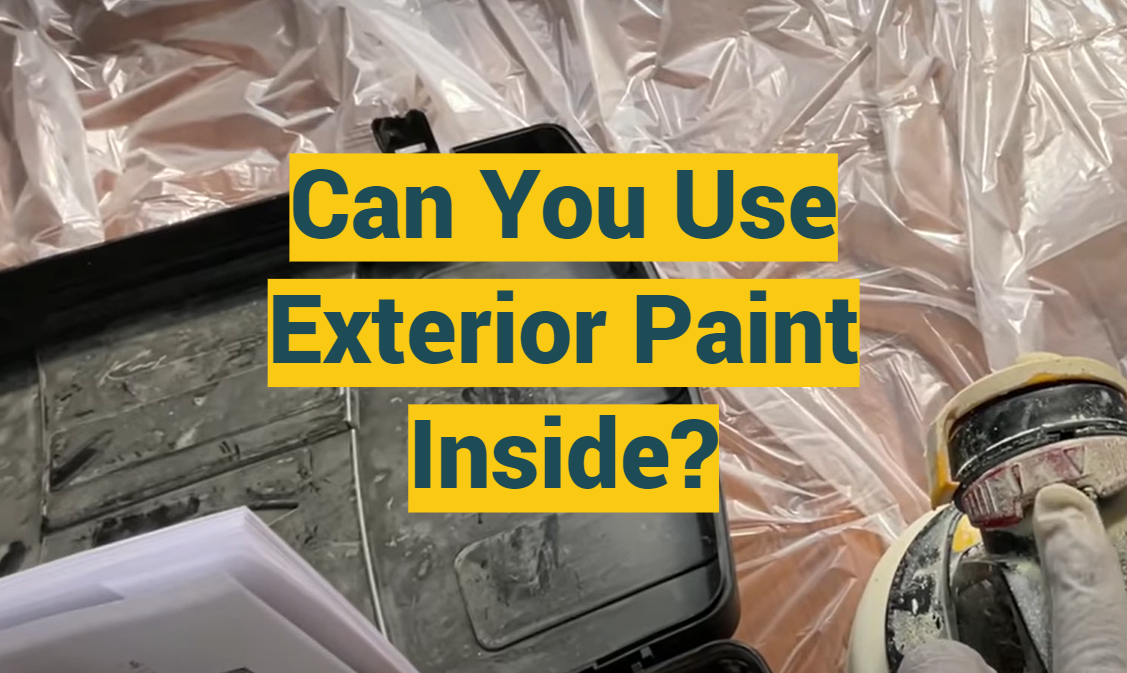
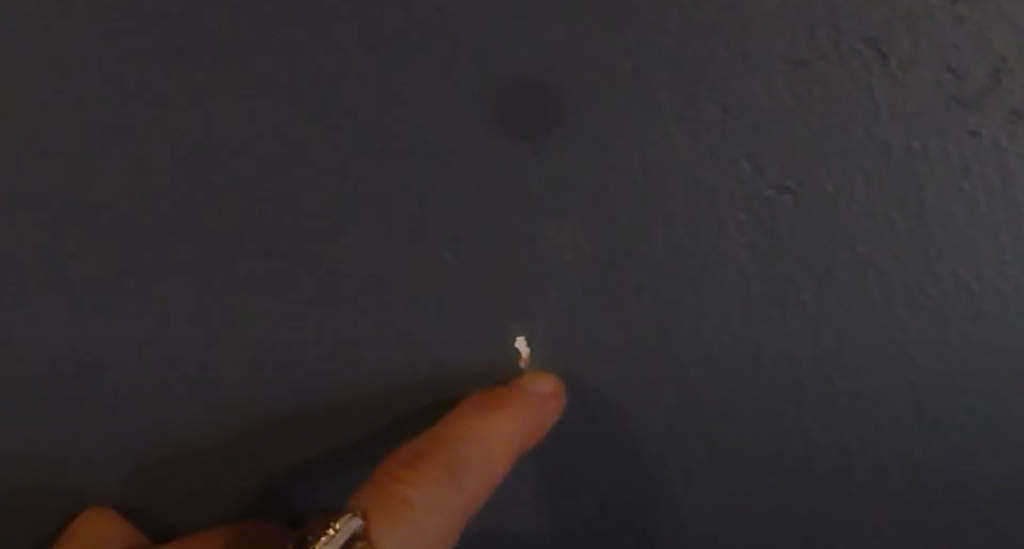

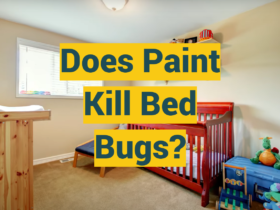
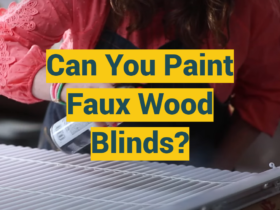

Leave a Review